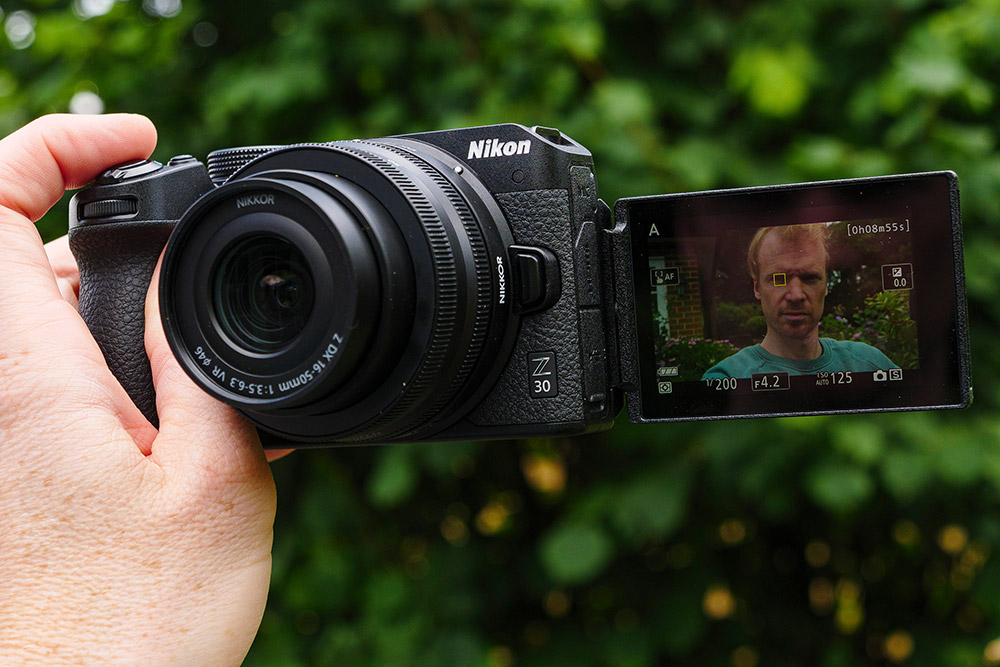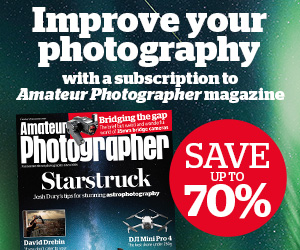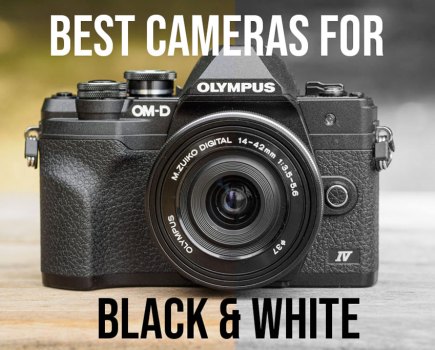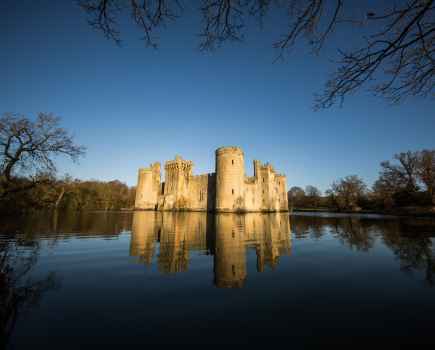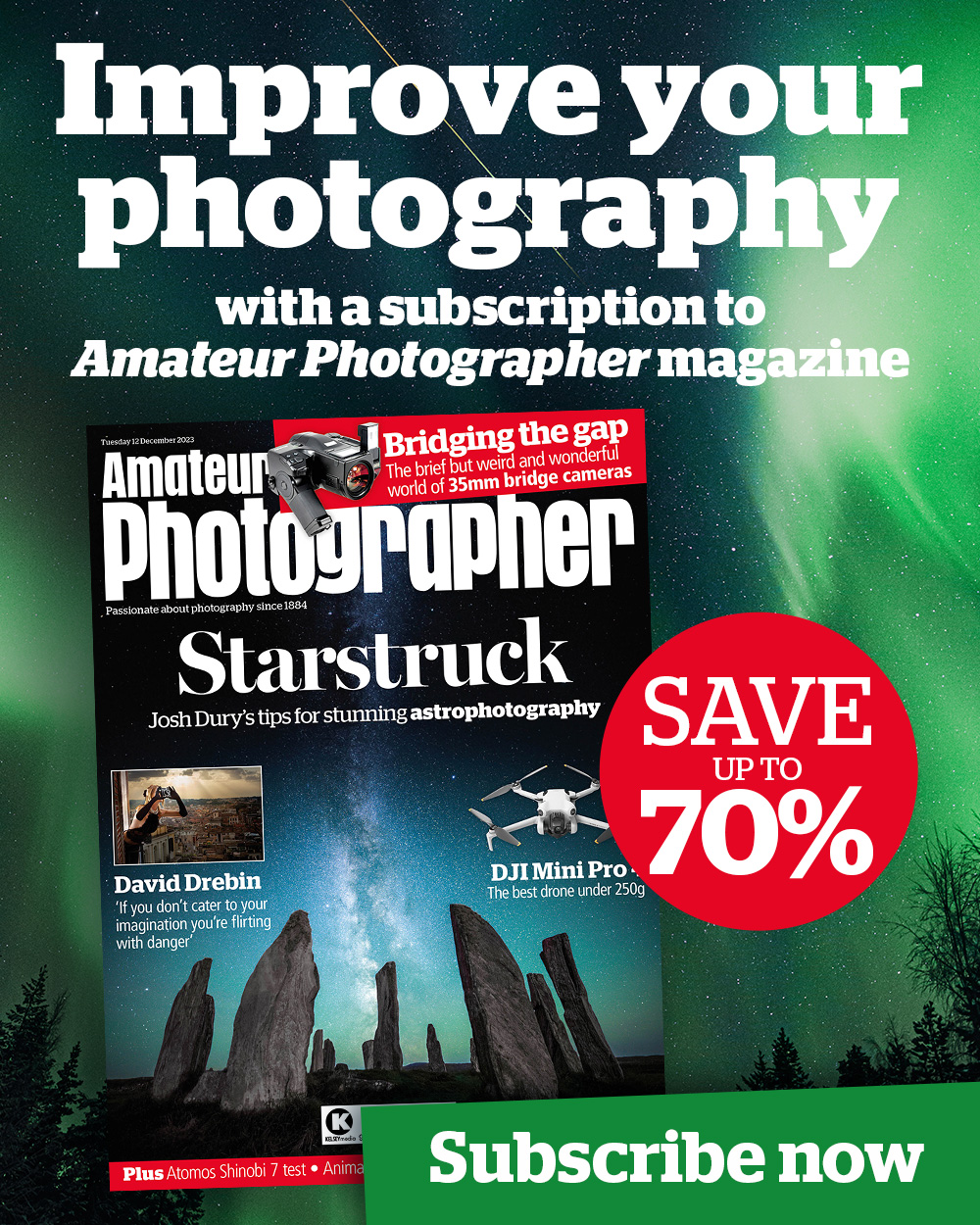The best small mirrorless cameras offer the kind of portable power that DSLRs can only dream of. While it’s true that top-line mirrorless cameras are getting pretty bulky, to the point where their supposed size advantage can seem pretty negligible, there are also still plenty of mirrorless options available that offer great quality in a small package.
Smaller mirrorless cameras have plenty of advantages. They’re more transportable for one, and can be used more easily one-handed, which can be a boon for street photography. We’ve drawn on the expertise of our review team to come up with a quick list of smaller mirrorless cameras that have impressed us, with options from across the major manufacturers. Bear in mind that in general we’ll be looking at smaller sensor sizes as these allow for smaller bodies, though we have included full-frame options for those who want a large-sensor option.
You can scroll to the bottom of this page for a quick explainer section on how to choose a small mirrorless camera. For more affordable choices, check out our guides to the best cheap full-frame cameras, as well as the best cameras under £500 / $500. And, if you’re looking for a small camera because you’re interested in vlogging, take a look at our guide to the best cameras for vlogging and how to get started.
The best small mirrorless cameras: our quick list
Want to cut right to it? Here’s a quick list of the small mirrorless cameras we’ve included on this list, along with links to get the best prices for each one:
- Lightest Fujifilm: Fujifilm X-T30 Mark II – check best price
- Smallest Fujifilm with IBIS: Fujifilm X-S10 – check best price
- Best small Sony camera: Sony A6700 – check best price
- Best small full-frame camera: Sony A7C II – check best price
- Lightest Olympus: Olympus OM-D E-M10 Mark IV – check best price
- Smallest weather-sealed mirrorless: OM System OM-5 – check best price
- Panasonic’s best small mirrorless camera: Panasonic Lumix GX880 (GF10) – check best price
- Best small mirrorless camera for vlogging: Panasonic Lumix G100 – check best price
- Lightest Nikon mirrorless camera: Nikon Z30 – check best price
- Canon’s best small mirrorless camera: Canon EOS R10 – check best price
- Best small Canon EOS M: Canon EOS M6 Mark II – check best price
Read on to learn more about why we picked each of these cameras, as well as key specs and how they perform…
Lightest Fujifilm: Fujifilm X-T30 Mark II
Fujifilm X-T30 Mark II in hand, body only
- Current street price: $953 / £749 (body only)
- Sensor: 26.1MP APS-C X-Trans CMOS 4
- Lens mount: Fujifilm X-Mount
- ISO: 160-12,800 (80-51,200 extended)
- Video resolution: 4K
- Viewfinder: 2.36M-dot
- Display: 3in, 1.62M-dot two-way tilting LCD
- Dimensions: 118.4×82.8×46.8mm
- Weight: 378g (with battery and memory card)
The Fujifilm X-T30 Mark II is basically a smaller, lighter and more affordable alternative to the X-T4 as it features the same 26.1MP 4th generation X-Trans CMOS sensor and processor. There are also 2.16M phase detection pixels covering 100% of the frame and up to 425 user-selectable AF points.
Shutter speed and exposure compensation dials help give the X-T30 II old-school looks and handling designed to appeal to traditionalists who will love the Fujifilm’s range of X-Mount lenses that feature an aperture ring.
Along with that traditional appearance, the X-T30 II has some great modern technology, including a responsive tilting touch-screen, fast autofocusing and an excellent 0.39-inch 2.36M-dot OLED viewfinder.
Although it’s not weather-sealed, its magnesium alloy construction gives the X-T30 II a solid feel and its handling is generally very good aside from the location of the Q button which means it’s a bit too easy to accidentally activate the quick menu.
You’ll also find it delivers excellent image quality with Fujifilm’s well loved colour reproduction. For video use, the lack of in-body image stabilisation may be an issue, so be sure have a look at the next model in the list.
The X-T30 II is being sold with a variety of kit lenses. The XF 18-55mm f/2.8-4 is perhaps the best, but the XC 15-45mm is smaller, cheaper and lighter.
Read our full Fujifilm X-T30 II review.
Smallest Fujifilm with IBIS: Fujifilm X-S10
Fujifilm X-S10 in hand, Photo: Andy Westlake
- Current street price: $1144 / £899 (body only)
- Sensor: 26.1MP APS-C X-Trans CMOS 4
- Lens mount: Fujifilm X-Mount
- ISO: 160-12,800 (80-51,200 extended)
- Video resolution: 4K
- Viewfinder: 2.36M-dot
- Display: 3in, 1.04M-dot vari-angle LCD
- Dimensions: 126.0 x 85.1 x 65.4mm
- Weight: 465g (with battery and memory card)
The Fujifilm X-S10 is the Fujifilm APS-C format camera for photographers who don’t want traditional exposure controls. It has much of the same technology as the X-T30 (and X-T4) including the 26.1Mp X-Trans CMOS 4 sensor and X Processor 4, but there’s an exposure mode dial instead of the shutter speed dial and the aperture can be adjusted either via a lens ring or a command dial on the camera body.
In a step up from the X-T30 II, the X-S10 has a vari-angle touchscreen (great for videographers) and a very effective in-body image stabilisation (IBIS) system that enables up to 6 stops shutter speed compensation.
As an X-series camera, the X-S10 benefits from Fujifilm’s superb colour science and there’s an extensive collection of Film Simulation modes that can be used to give JPEGs and videos colours, tones and contrast to suit the subject, shooting conditions and photographer’s preference.
As we’d expect from Fujifilm, video can be recorded at up 4K resolution at 30fps with no additional crop while Full HD video can be recorded at up to 240fps.
Fujifilm has recently added another model to the X-S series to consider, the X-S20. This is almost identical in size to the X-S10 and has the same sensor but uses the X-Processor 5 to give a better IBIS performance (7 stops benefit), superior AF and vastly improved video features. It sells at $1,412 / £1,109 body only. This is one of the most powerful small mirrorless cameras you can get, though the extra power does increase the price.
If you want to keep the size to a minimum, consider the Fujinon XC 15-45mm kit lens. It’s not bad optically, and it’s small, light and cheap to buy.
Read our full Fujifilm X-S10 review.
Best small Sony camera: Sony A6700
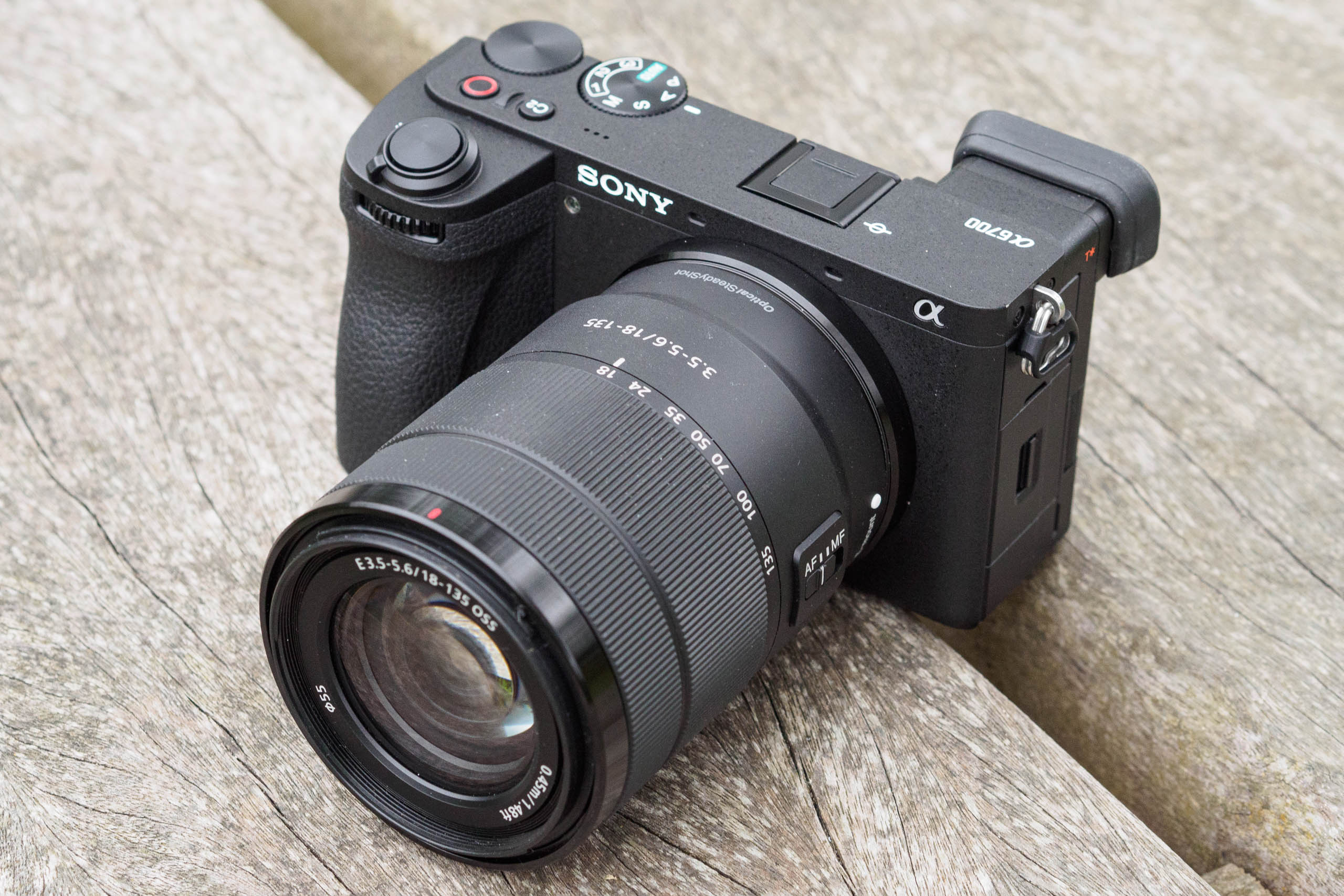
The A6700 uses a similar flat-bodied, rangefinder-style design to previous Sony APS-C models. Credit: Andy Westlake
- Current street price: $1819 / £1429 (body only)
- Sensor: 26MP APS-C
- Lens mount: Sony E
- ISO: 100-32,000 standard, 50-102,400 (extended)
- Video resolution: 4K
- Viewfinder: 2.36M-dot
- Display: 3in, 1.04M-dot vari-angle LCD
- Dimensions: 122 x 69 x 75.1mm
- Weight: 493g (with battery and memory card)
The Sony A6700 is the latest and most powerful model in the Sony APS-C mirrorless line-up. It’s the successor to the previous flagship A6600 and brings vastly improved video features, a new 26MP sensor first seen in the Sony FX30 cinema camera, and a slightly thicker body. Its rectangular rangefinder-style design means that there’s no protruding viewfinder housing on the top, so it’s still a pretty compact and pocketable camera, especially when used with the Sony 16-50mm power zoom kit lens. It’s not the best optically, but if you want a small camera-lens combination, it’s perfect. The A6700 can, of course, take the full range of Sony E and FE lenses.
The 26MP sensor might only be a small increase over the previous model’s 24MP, but photographers do get Sony’s latest and most advanced subject recognition AI autofocus, and it even incorporates the dedicated AI processor first seen in the Sony A7R V.
The headline news with this camera, though, is its 4K 30p, 60p and 120p (cropped) video recording capability, together with improved file format and compression options. This is the ideal camera for hybrid content creators who need to shoot both stills and video, and for whom the cheaper Sony ZV-E10 or more expensive ZV-E1 are just too video-focused.
Read our full Sony A6700 review.
Best small full-frame camera: Sony A7C II
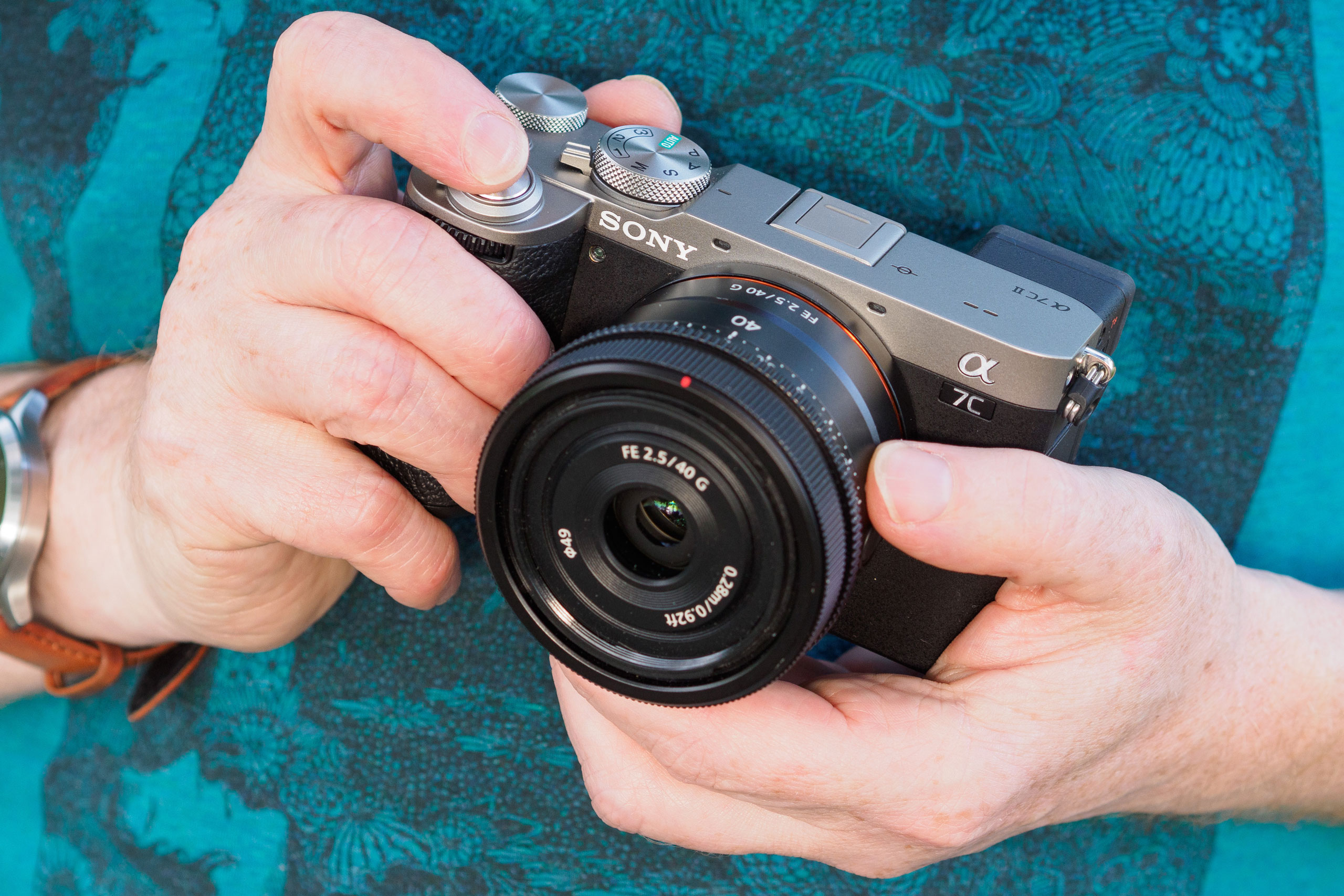
Sony A7C II with the Sony FE 40mm F2.5 G lens. Credit: Andy Westlake
- Current street price: $2545 / £1999 (body only)
- Sensor: 33MP full-frame Exmor R CMOS
- Lens mount: Sony FE
- ISO: 50-204,800
- Video resolution: 4K
- Viewfinder: 2.36M-dot
- Display: 3in, 1.04M-dot fully articulating LCD
- Dimensions: 124 x 71.1 x 63.4mm
- Weight: 525g (with battery and memory card)
Sony’s continuing obsession with making small and powerful cameras means that those looking for a lightweight mirrorless camera also have some attractive full-frame options to consider. The Sony A7C II is a refinement of the original A7C, which met some criticism from reviewers and punters alike due to its awkward handling. Does the A7C II do enough to right the ship?
It’s definitely an improvement. The Sony A7C II brings the gorgeous image quality of the A7 IV in a commendably tiny package, and it also comes with the latest autofocus advancements for unparalleled focusing speed and accuracy. A new front control dial improves handling – giving the A7C II one more dial than the A6700, featured above, though the APS-C models does benefit from a larger handgrip. It’s not entirely clear why – there’s no reason the same handgrip couldn’t have been ported onto both cameras – but that’s Sony for you.
How it compares to the Sony A7CR
Something that’s also worth noting at this point is that the A7C II was released at the same time as the A7CR, which is essentially the same camera body with an ultra-high resolution 60MP sensor packed in. We’ve picked the A7C II for this round-up, as it’s a more affordable all-rounder that’s likely going to be the more appropriate buy for most people, but if you want more resolution, the A7CR is going to be the port of call.
Small full-frame mirrorless cameras area funny old thing. While the technical achievement here is undeniable, we’re less convinced by the user benefit of the A7C II, particularly when you consider the fact that the weight of full-frame E-mount lenses is likely to negate the weight saving of the smaller camera. Still, if you do want a small full-frame mirrorless camera, this is one of the most capable you can buy right now.
Read our full Sony A7C II review.
Lightest Olympus: Olympus OM-D E-M10 Mark IV
The compact Olympus OM-D E-M10 Mark IV in hand, Photo: Andy Westlake
- Current street price: $826 / £649 (body only)
- Sensor: 20.3MP Four Thirds Type Live MOS
- Lens mount: Micro Four Thirds
- ISO: 80-25,600
- Video resolution: 4K
- Viewfinder: 2.36M-dot
- Display: 3in, 1.04M-dot two-way tilting LCD
- Dimensions: 121.7 x 84.4 x 49mm
- Weight: 383g (with battery and memory card)
As a Micro Four Thirds camera, the Olympus OM-D E-M10 Mark IV has a smaller than APS-C format sensor, which gives it an advantage for size and weight. Indeed, with the Olympus 14-42mm f/3.5-5.6 EZ lens mounted, it could easily pass for a compact camera.
The sensor size brings a 2x focal length multiplication factor making the 14-42mm lens produce framing like a 28-84mm lens on a full-frame camera. That’s a nice everyday option.
The E-M10 Mark IV doesn’t have phase detection autofocusing and relies on contrast detection alone. This is pretty dependable for still and slow-moving subjects, but it’s not ideal for sport and action photography – though it is still surprisingly fast for its type.
Despite its entry-level status, the E-M10 IV has Olympus’s excellent Live Time and Live Composite modes, which take the sweat out of long exposure images, with Live Composite mode being especially useful for light painting, traffic trail and firework images.
There’s also a very good image stabilisation system, a long list of Art Filters, which are of use for stills and video, and a screen that can flip through 180° to be visible from in front of the camera. Best of all, it usually comes with a 14-42mm EZ pancake zoom, which is the smallest and slimmest kit lens on the market.
Read our full Olympus OM-D E-M10 Mark IV review.
Smallest weather-sealed mirrorless: OM System OM-5
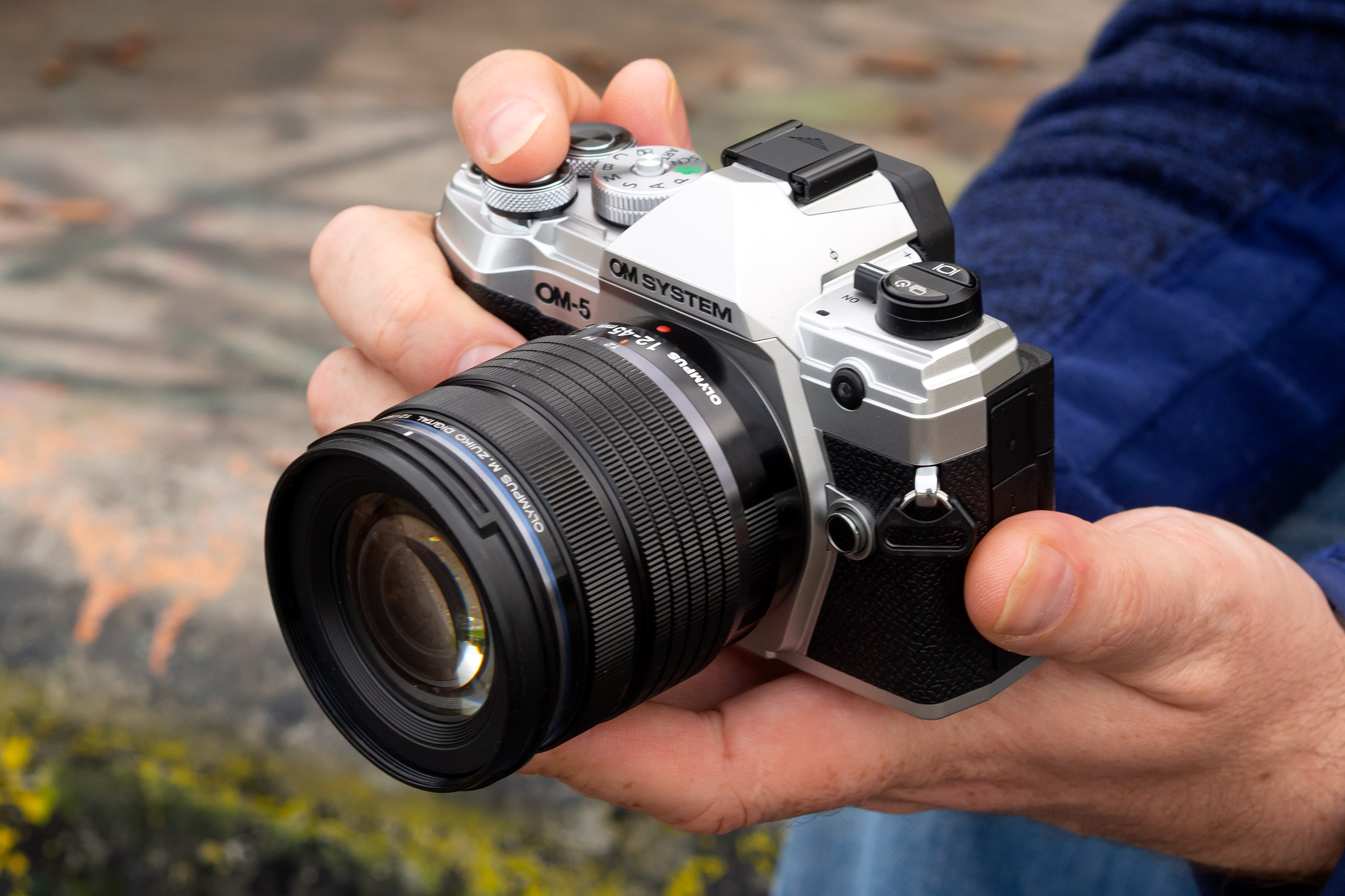
OM System OM-5 in use with 12-45mm F4 PRO lens, Photo: Jeremy Waller
- Current street price: $1526 / £1199 (body only)
- Sensor: 20.4MP Four Thirds sensor
- Lens mount: Micro Four Thirds
- ISO: 64-25,600
- Video resolution: 4K
- Viewfinder: 2.36M-dot
- Display: 3in, 1.04M-dot vari-angle LCD
- Dimensions: 125.3 x 85.2 x 49.7mm
- Weight: 414g (with battery and memory card)
The OM System OM-5 isn’t much heavier than the E-M10 IV shown above, yet offers a weather-sealed camera body and, when combined with a weather-sealed Micro Four Thirds lens, offers a completely weather-sealed camera system with an IP53 rating. This makes it a great choice for anyone planning on going out in less than ideal weather conditions.
The camera is full of advanced photo features as well, including Live ND (for slow shutter speed shots of water etc), a high-res multi-shot mode for static scenes (for up to 80MP images), and other features that you rarely get on cameras from other brands, including Starry Sky AF. In testing, we found the camera performed admirably, and gave excellent colour reproduction.
For video recording, there is a microphone socket, as well as unlimited video recording at resolutions up to CINE 4K. The camera also benefits from one of the best image stabilisation systems available, thanks to a 5-axis in-body image stabilisation (IBIS). If you’re looking for a particularly compact camera, then the Olympus/OM System f/4 PRO lenses combine small size with big performance, as the 12-45mm f/4 PRO (shown above) demonstrates.
Read our full OM System OM-5 review.
Panasonic’s best small mirrorless camera: Panasonic Lumix GX880 (GF10)
The Panasonic Lumix GX880 is Panasonic’s tiniest mirrorless camera.
- Current street price: £229 (good used condition)
- Sensor: 16.1MP Micro Four Thirds MOS
- Lens mount: Micro Four Thirds
- ISO sensitivity: 200-25,600
- Screen: 3-inch 1.04M-dot tilting touchscreen
- No viewfinder
- Dimensions: 106.5 x 64.6 x 33.3 mm
- Weight: 270g (with battery and memory card)
This pocket wonder really has to be seen to be believed. Somehow, Panasonic has created a Micro Four Thirds mirrorless camera that weighs just 270g body only. This is probably the smallest and lightest mirrorless camera you can buy right now, and it acquits itself well in use, too. The previous GX850/GX800 was available in the US, (and other areas), and was a couple of grams lighter, but not enough to make a noticeable difference.
The Lumix GX880 is built around a 16MP MOS sensor, which is more than enough resolution for most purposes. It’s got face and eye detect autofocus, which is hugely handy for street photography – one of the best uses for this tiny, unobtrusive camera.
4K Post-focus mode
Like all contemporary Panasonic Lumix cameras, the GX880 shoots 4K video, and can make use of Panasonic’s clever 4K Photo modes. These include the ability to extract high-res stills from 4K footage – effectively giving you a 30fps burst rate. There’s also 4K Post-focus mode in which the camera shoots a series of images at different focus distances. You can then select where you want the focus to be with a tap on the screen post-capture.
If size and weight are your priority when picking a camera, Micro Four Thirds is a very sensible system to buy into. There are absolutely loads of slim, high-quality lenses available from Olympus, Panasonic and third party brands, but our favorite for a pocket-size combination is Panasonic’s own 12-32mm pancake zoom. The GX880 has been around for a while now, but it’s a great little pocket camera, and cheap too.
Best small mirrorless camera for vlogging: Panasonic Lumix G100
The Panasonic Lumix G100 in hand. Photo credit: Richard Sibley
- Current street price: $432 / £340 (body only in good used condition)
- Sensor: 20.3MP Four Thirds sensor
- Lens mount: Micro Four Thirds
- ISO sensitivity: 100-25,600 (extended)
- Screen: 3inch 1.84M-dot vari-angle touchscreen
- Viewfinder: 3.68M-dot 0.73x magnification electronic viewfinder
- Video: 4K video recording
- Dimensions: 115.6 x 82.5 x 54.2mm
- Weight: 345g (with battery and memory card)
Designed for vlogging and video recording, the Panasonic Lumix G100 is a compact, neat little camera, that also represents excellent value for money, particularly if you can find it in-store body only, if you have a lens available. This camera is particularly lightweight, but features a high-resolution electronic viewfinder, as well as a high-resolution 3inch vari-angle touchscreen.
The Micro Four Thirds camera features a 20MP image sensor, and gives good image quality, with great looking stills images. As part of the Micro Four Thirds system, there are a wide range of Micro Four Thirds lenses to choose from, including budget options, as well as premium optics.
The camera records 4K video, and the screen can be turned forwards to use as a selfie screen for vlogging, although the crop is worth noting, particularly if video is your main focus.
The battery life is a little on the short side as well, so packing a spare battery, or a portable power bank is definitely recommended, although this could also be said for some of the other mirrorless cameras here. The tiny Panasonic 12-32mm (24-64mm equivalent) pancake zoom is the perfect lens to go with it.
Check out our Panasonic Lumix G100 review.
Lightest Nikon mirrorless camera: Nikon Z30
The Nikon Z30 is the smallest and lightest in the Z range.
- Current street price: $762 / £599 (body only)
- Sensor: 20.9MP APS-C CMOS
- Lens mount: Nikon Z
- ISO sensitivity: 100-51,200
- Video resolution: 4K at 30fps and Full HD at 120fps
- No viewfinder
- Display: 3–inch 1.04M-dot vari-angle touchscreen
- Dimensions: 128 x 73.5 x 59.5mm
- Weight: 405g (with battery and memory card)
Nikon’s Z series now boasts three cameras with APS-C sensors, in addition to the full-frame flagship line-up. The Nikon Z30 is the smallest and lightest of the lot, weighing in at a slender 405g, and it’s also the cheapest at launch. While it’s comprehensively equipped for both stills and video, the Nikon Z30 has clearly been designed with vloggers in mind – it shoots uncropped 4K video, and it has a fully articulating screen that can be set to pretty much any angle.
The video focus doesn’t mean it skimps on stills. Having an ISO sensitivity range of 100-51,200 gives you real flexibility in low-light situations, especially given how good the performance is up to ISO 6400, as we found out in our testing.
Lack of viewfinder
The only thing that stills photographers are likely to take exception to is the very thing that has allowed Nikon to keep the cost and weight of the camera down – the lack of a viewfinder. This makes total sense on a vlogging camera, but if it’s a deal-breaker, then try one of the other Nikon Z APS-C cameras like the Z50 or the Z fc. Just be aware they’re a little heavier and more pricey.
It’s also worth noting that the majority of Z-Mount lenses have been designed for full-frame cameras, so finding a compact lens to go with this camera may be an issue once you grow beyond the compact zoom kit lens – though if you intend using the Z30 as a pocket camera, the retracting 16-50mm kit lens will be perfect.
Read our Nikon Z30 review.
Canon’s best small mirrorless camera: Canon EOS R10
The EOS R10 is small, but handles nicely.
- Current street price: $1271 / £999 (body only)
- Sensor: 24.2MP Dual Pixel APS-C CMOS sensor
- Lens mount: Canon RF (APS-C)
- ISO: 100-32,000, expandable to 51,200
- Video resolution: 4K 30p, 4K 60p with crop, Full HD 120p
- Viewfinder: 2.36M-dot EVF
- Display: Vari-angle 3-inch, 1.04M-dot LCD
- Focusing: Dual Pixel CMOS with up to 4,503 AF points
- Dimensions: 122.5 x 87.8 x 83.4mm
- Weight: 429g (including battery and memory card)
Canon arguably sounded the death knell for its APS-C EOS M cameras when it introduced the crop-sensor EOS R7 and EOS R10. The latter is the smaller of the pair, comparable in size and weight to an EOS M camera, and bursting with plenty more features.
With sophisticated autofocus, impressive shooting speed and DSLR-style handling, the EOS R10 is a comprehensive photographic package. As we found in our full test of the camera, the subject-detection autofocus is particularly impressive, making the camera a real contender for sports and action shooting on a budget. The viewfinder is perhaps a little small in use, but some some cutbacks are going to be necessary in making a fully featured camera as small as this.
The RF-mount lens range for APS-C RF cameras is pretty restricted currently – though, unlike the EF-M range, it’s likely to expand in the future. For the moment, as we said in our review of the EOS R10, the Fujifilm X-S10 is probably a better buy simply for its greater lens options. However, this is something we can expect to change as the EOS R series matures. The EOS R10’s body is not quite as pocket-friendly as some of the other cameras here, but Canon’s 18-45mm kit lens is pretty compact.
Read our full Canon EOS R10 review.
Best small Canon EOS M: Canon EOS M6 Mark II
Canon EOS M6 Mark II with lens and optional EVF
- Current used price: $800 / £629 (body only in used condition)
- Sensor: 32.5MP Dual Pixel CMOS sensor
- Lens mount: EF-M
- ISO: 100-25,600 expandable to ISO 51,200
- Video resolution: 4K
- Viewfinder: optional external viewfinder EVF-DC2
- Display: Tiltable 3-inch, 1.04M-dot LCD
- Focusing: Up to 143 phase-detection AF points
- Dimensions: 119.6 x 70.0 x 49.2mm
- Weight: 408g (body only)
Canon used the same 32.5MP APS-C format Dual Pixel CMOS sensor for the M6 Mark II as is in the Canon EOS 90D DSLR. The chip is also paired with the DIGIC 8 processing engine to give a maximum shooting rate of 14fps that can be maintained for up to 23 raw files or 54 JPEGs with continuous focusing.
Combine that fast-shooting capability with the M6 II’s excellent 143-point phase detection AF system, which copes extremely well with low light, and you have a versatile mirrorless camera.
Screen limitations
Unlike the M50 and M50 II, which have a vari-angle screen, the M6 II has a screen that can only be tilted up or down. However, there’s no additional crop applied to 4K video which means that movies have the same angle of view as stills.
Canon decided to make a viewfinder optional with the M6 II. That means that there isn’t one built in but it is compatible with Canon’s EVF-DFC2. This has a 0.39-inch 2.36-miliion dot display and connects via the camera’s hotshoe. It’s a worthwhile addition but it bumps up the cost and size of this superb little camera. Without the optional viewfinder, this is a very compact camera, and one of the lighter models.
However, it’s pretty clear that Canon is switching all its attention to its newer RF-S mount mirrorless cameras, so if you want to take advantage of the M6 II’s features and resolution, plus its decent range of EOS M lenses, you’d better move quickly.
Read our full Canon EOS M6 Mark II review.
How to choose the best small mirrorless camera
Small cameras inevitably come with compromises, so it’s worth thinking about what you can live without. Sensor size is a big factor: the small mirrorless cameras have small sensors, particularly Micro Four Thirds but APS-C too. Bigger sensors do have advantages in terms of dynamic range and ultimate image quality; however, small sensors are still very capable and many professional photographers and content creators swear by MFT cameras, plus they give your lenses greater effective telephoto reach. For more on sensor size, have a look at our guide to APS-C, MFT and Full-Frame sensors.
Also, do you need a viewfinder? For manufacturers, this the first thing to go when they set about making a small mirrorless cameras. Some photographers simply can’t imagine life without one, but if you’re happy composing images on the LCD screen, it’s a great way to save some weight and bulk.
It’s also key to think about lens selection. The lens you fit to your camera will have a big impact on its weight and balance, not to mention image quality. Again, Micro Four Thirds is a system to think about here, as it offers a huge range of slim, pancake lenses that are perfect with small cameras. Also, with their 2x crop factor you can achieve long telephoto focal lengths without the lenses being massive. The classic example here is the OM System 300mm f/4 which gives an effect of 600mm in the full-frame format, but it comes in a very compact form.
Further reading
- Can’t find the Fujifilm X100V? Here are 5 retro alternatives
- Classic compact cameras to buy
- See our latest buying guides

